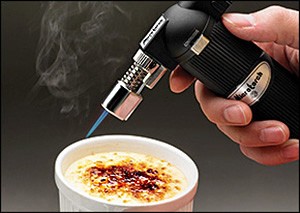Torching our Sculptures
Why Torching?
Often we have pitch problems that are quickly solved by torching those pockets to melt and bubble out the pitch. As a general rule, since torched pitch will burn, a heat gun can be used to remove pitch. Torching is faster
will burn, a heat gun can be used to remove pitch. Torching is faster
Torching will darken bases but still retain a natural look that enhances the total display.
We can use fire to harden and shape some soft woods
Torching will accent, shade and or outline some of our sculptures
Torching is a great technique to remove shaggy broken, and splintered edges on rough sculptures
How To Torch
Basic Materials Needed
Butane micro torch or propane torch
Water – either a spray bottle or pail
Foil or water to protect areas from burning
Fire safe area to work
Gloves to protect your hands
Old crankcase oil (to be explained)
Old wire brush and old rags
Murphy’s soap and water to clean
Sometimes WD40 or lemon oil can be also used (with great care)
Never do torching alone. It takes two people or a very knowledgeable expert. Too many things can go wrong. Torching is not for sissies.
Pitch Can be removed by lightly brushing pitch areas with a lighted torch. I will always use a micro torch for this purpose. Wipe the bubbling pitch off with a paper towel then wipe the area with alcohol as we have used before. Pitch will glaze after torching and give a very pleasant shine to finish your piece. Most Often we cannot remove all pitch, but we want it glazed with a hard finish, not the sticky finish of untreated pitch.
Bases Bases can be treated with the torch to create a very natural finish. Torch with or without using the crankcase oil, brush to clean, then apply a light coat of wax. This is a great look to feature some of our pieces.
Darkening Woods can be darkened for accent to bring out a special area of our sculpture; like a wing. We can highlight an area to accent a ridge or for overall shading, darken exterior edges for definition and drama, or to add depth to flat surfaces. This technique is where we use crankcase oil for the areas we wish burned and darkened. The oil burns on the surface and the wood is not damaged if done correctly. It is a good idea to have a practice piece of some similar wood to experiment with first. Paint the area for torching with the oil, torch that area, wet it down when effect is achieved, then wipe with paper towels or old cloth. Brush with an old wire brush; wipe dust and residue off with a damp paper towel, then let dry. If more areas need torching, do so at this time. After the right effect is achieved, continue working sculpture as needed.
Hardening Fire will harden some softwoods. This requires a good knowledge of the various woods and also knowing how much burning is enough. Trial is the best teacher, but for the novice I recommend other wood hardeners which we can discuss at another time.
Shag Removal Burning is a great way to remove those shaggy ends and hairy parts. These burn easily and are just brushed off. Then continue working your sculpture as before.
